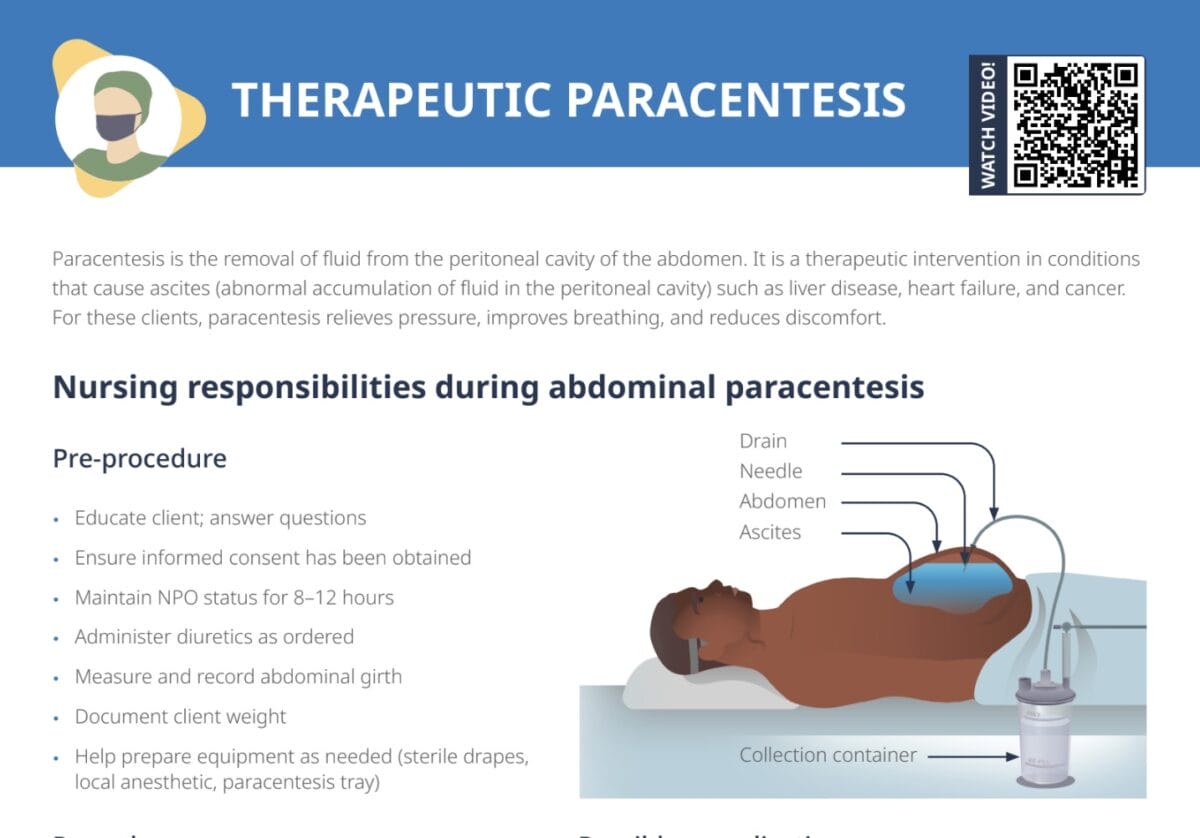What is therapeutic paracentesis?
Definition
Paracentesis is an invasive procedure in which a large-bore needle is inserted into the abdomen to drain fluid from the peritoneum through a drainage catheter into a container.
If done for diagnostic purposes, a small amount of fluid is removed for testing. Removing large volumes of fluid via paracentesis is an important treatment measure when ascites does not resolve with medication and dietary changes.
Note: The suffix -esis always indicates that the term means something related to shifting fluids.
Indications for therapeutic paracentesis
Ascites, the accumulation of fluid in the peritoneum, is a key complication of liver cirrhosis and a typical indication for therapeutic paracentesis. The first line of treatment for ascites is based on a low-sodium diet and diuretic treatment. If the drug therapy and dietary restriction are no longer effective, paracentesis is the next step.
Nursing tasks around therapeutic paracentesis
Preparation and monitoring
Nursing tasks involve preparing the client for the procedure, and monitoring the client’s safety during and after the procedure.
- Provide emotional support and reassurance to clients, as many perceive the invasiveness of the procedure as worrisome.
- Immediately before the procedure, have the client empty the bladder to minimize the risk of nicking the bladder.
- Clients are at increased risk for electrolyte imbalances and hypovolemia and require close monitoring.
During and after the procedure
Note: Drain fluid slowly to minimize the client’s risk of circulatory collapse.
The procedure can take minutes up to a few hours depending on the amount of fluid removed, and how stable the patient is.
After the procedure:
- Place the client in high-Fowler’s position or supine turned toward the side.
- Monitor the client’s vital signs and notify the provider of changes:
- If there is internal leaking, the blood pressure rises and the heart rate increases.
- If the client reports dizziness, the increased heart rate and decreased blood pressure points to hypotension.
- Watch the dressing for signs of leaking ascitic fluid or bleeding.
- Notify the provider for the following:
- Client reports increased pain or shortness of breath
- Drainage noted on dressing

